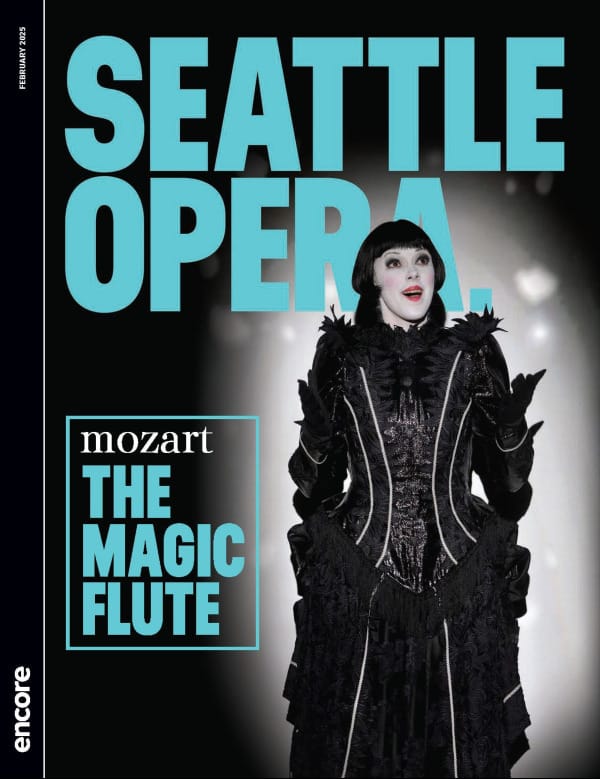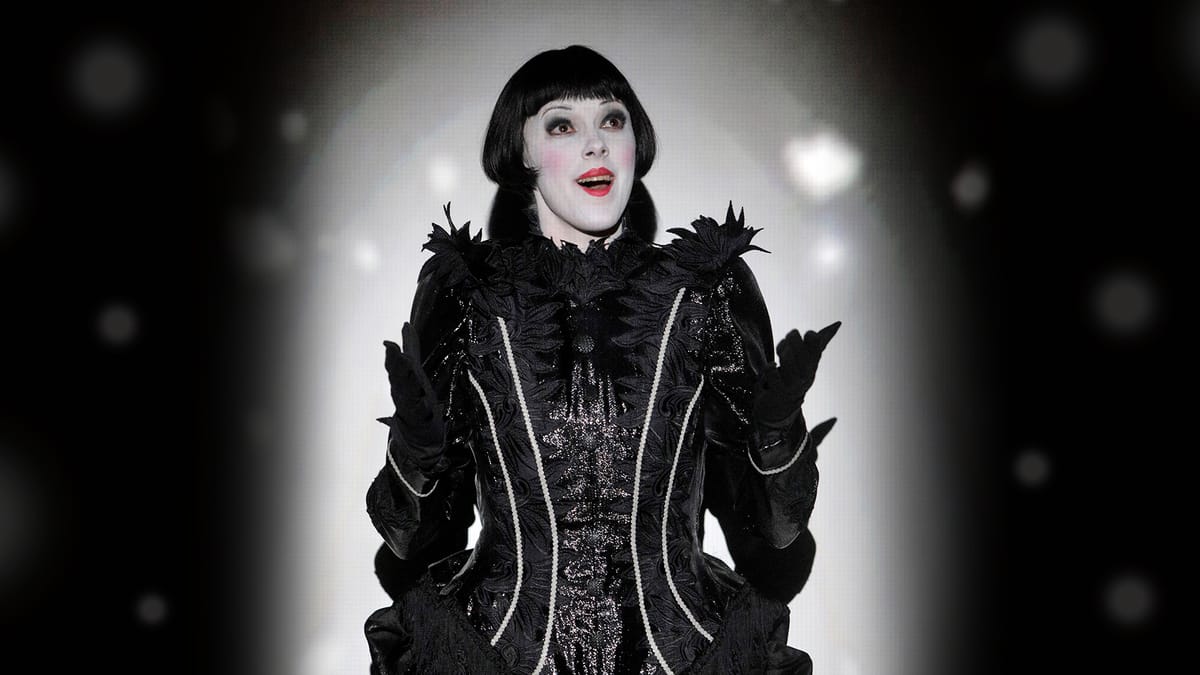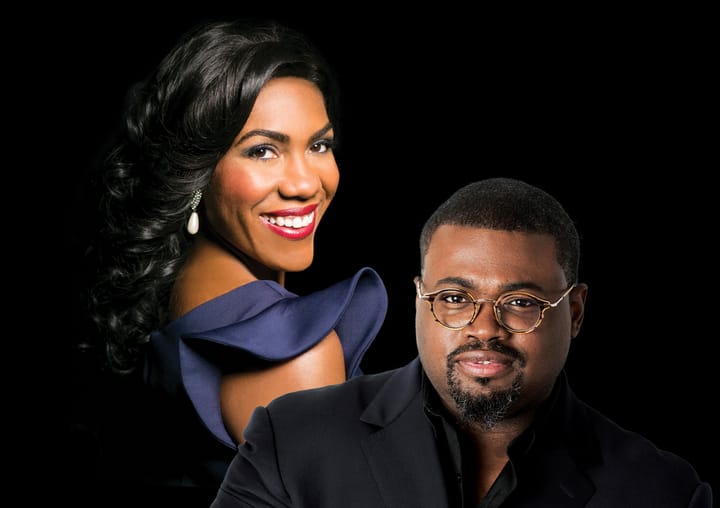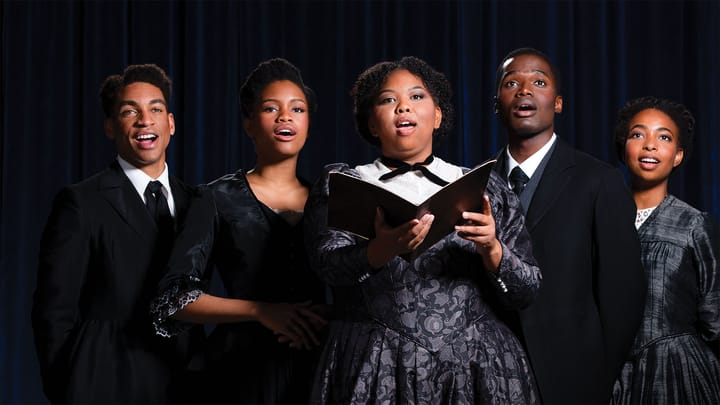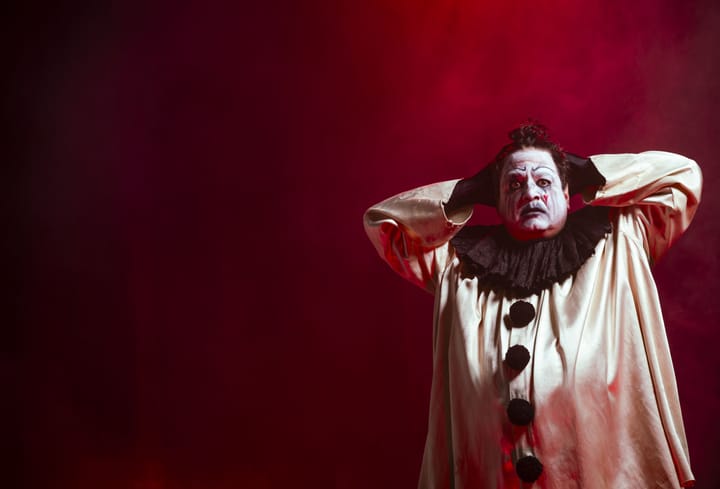February 22 – March 9, 2025 | McCaw Hall
In This Program
- Show Information
- Who’s Who
- Letters
- Features
- Additional Information
The Magic Flute
Production Sponsors
Principal Singer Season Sponsor
Joan Watjen
in Memory of Craig M. Watjen
Production Sponsors
Nesholm Family Foundation
Port of Seattle
National Endowment for the Arts
We are deeply grateful to you, Seattle Opera’s 4,400+ Annual Fund donors.
Your passion for opera and contributions at every dollar amount inspire great performances in McCaw Hall, and support engaging activities at The Opera Center and throughout Washington state all season long!
Thank you!
Music by Wolfgang Amadeus Mozart
Libretto by Emanuel Schikaneder
Premiere: Theater auf der Wieden, Vienna, 1791
Seattle Opera Premiere: 1978
Performed at Marion Oliver McCaw Hall:
February 22, 23, & 26, 2025
March 1, 2, 7, 8, & 9, 2025
In German with English Captions
Evening Performances 7:30 PM
Matinees 2:00 PM
Act I: 69 minutes
Intermission: 25 minutes
Act II: 74 minutes
A Production of the Komische Oper Berlin
Co-Produced by
Los Angeles Opera and Minnesota Opera
Concept by
“1927” (Suzanne Andrade and Paul Barritt) and Barrie Kosky
Set construction by
Minnesota Opera
Costumes by the Los Angeles Opera Costume Shop
CONDUCTOR
Christine Brandes
REVIVAL STAGE DIRECTOR
Erik Friedman †
PRODUCTION
Suzanne Andrade †
Barrie Kosky †
ANIMATION
Paul Barritt †
CONCEPTION
1927 †
STAGE DESIGN & COSTUMES
Esther Bialas †
SOUND DESIGNER
Robertson Witmer
WIGS, HAIR, AND MAKEUP MANAGER & Designer
Ashlee Naegle
CHORUS MASTER
Michaella Calzaretta
ENGLISH CAPTIONS
Giles Shephard †
Cast
(in order of appearance)
TAMINO
Duke Kim (Feb. 22, 26, Mar. 2, 8)
Victor Ryan Robertson † (Feb. 23, Mar. 1,7, 9)
FIRST LADY
Ariana Wehr
SECOND LADY
Ibidunni Ojikutu
THIRD LADY
Laurel Semerdjian †
PAPAGENO
Rodion Pogossov
The QUEEN OF THE NIGHT
Sharleen Joynt
MONOSTATOS
Rodell Rosel
PAMINA
Brandie Sutton (Feb. 22, 26, Mar. 2, 8)
Camille Ortiz † (Feb. 23, Mar. 1, 7, 9)
FIRST GENIE
Ethan Ibsen † (Feb. 22, 26, Mar. 2, 8)
Sanne Christine Smith † (Feb. 23, Mar. 1, 7, 9)
SECOND GENIE
Autumn Helene Chociej † (Feb. 22, 26, Mar. 2, 8)
Grace Elaine Franck-Smith (Feb. 23, Mar. 1, 7, 9)
THIRD GENIE
Caleb Petrini † (Feb. 22, 26, Mar. 2, 8)
Anthony E. Kim † (Feb. 23, Mar. 1, 7, 9)
THE SPEAKER (OLD PRIEST)
Michael J. Hawk
SARASTRO
In Sung Sim †
PAPAGENA
Tess Altiveros
FIRST ARMORED MAN
Chad DeMaris
SECOND ARMORED MAN
Edwin Jhamal Davis
ASSISTANT CONDUCTOR
Philip A. Kelsey
MUSIC PREPARATION
Philip A. Kelsey
David McDade
Jay Rozendaal
ASSISTANT DIRECTOR
Joshua Horowitz
PRODUCTION STAGE MANAGER
Jonathan Moore
VIDEO STAGE MANAGER
Mike Egan
ASSISTANT STAGE MANAGERS
Jonathan S. Campbell †
Quinn Chase
† Seattle Opera mainstage debut
Opera presentation and production © Seattle Opera 2025. Copying of any performance by camera, audio, or video recording equipment, and by any other copying device, and any other use of such copying devices during the performance is prohibited.
The Story
ACT I
In a dark forest, far away…
In a mysterious wood, Prince Tamino flees from a monstrous serpent. As he loses strength and faints, three ladies, who serve the Queen of the Night, appear and defeat the serpent. The ladies are charmed by the Prince and depart to tell the Queen of their deed. Tamino regains consciousness and sees the bird catcher Papageno, who he believes has saved him. Papageno pretends that he has indeed dispatched the serpent, but the three ladies return and punish Papageno for this lie by rendering him mute. They then show Tamino an image of Pamina, the Queen’s daughter. Tamino instantly falls in love with her image. The Queen of the Night then appears, telling Tamino that her daughter has been kidnapped by the evil Sarastro. She commands him to rescue her, and Tamino beseeches the gods to help him find her. The three ladies return, giving Papageno his voice back; they then give a magic flute to Tamino and magic bells to Papageno to ensure their safety as they attempt to rescue Pamina. They also reveal three genies who will guide them on their journey.
Near Sarastro’s temple, his servant Monostatos pursues Pamina, but the appearance of Papageno frightens Monostatos away. Papageno tells Pamina that Tamino loves her and is on his way to save her. Papageno also admits that he hasn’t yet found a love of his own, and Pamina comforts him. The three genies lead Tamino to Sarastro’s temple, where a high priest informs Tamino that it is the Queen, not Sarastro, who is the actual villain. Overjoyed that Pamina is still alive, Tamino plays his flute, enchanting nature with his music. He hears Papageno’s pipes in the distance and rushes off in pursuit. Meanwhile, Papageno and Pamina try to flee the temple, but they are caught by Monostatos and his henchmen. Papageno plays his magic bells, which render the pursuers helpless. Sarastro enters with great ceremony. He punishes Monostatos and tells Pamina that he will eventually set her free. Pamina and Tamino get a brief glimpse of each other, but Sarastro keeps them separate. He orders that they must now face a series of trials.
INTERMISSION
ACT II
The Trial of Silence
Sarastro begins initiation rites with Tamino and Pamina, but Papageno is unable to complete them. Sarastro’s priests tell Tamino and Papageno that their first trial is about to begin: they must remain silent. The three ladies appear and attempt to persuade them to abandon their quest, challenging the pair’s resolve. Tamino remains silent and steadfast, but the distraught Papageno immediately begins to chatter. Meanwhile, Monostatos again tries to get close to the sleeping Pamina. The Queen of the Night appears to Pamina as she awakens and orders her to kill Sarastro. Pamina despairs at the thought, and Sarastro sings to Pamina that in his temple one forswears thoughts of revenge.
The Trial of Temptation
Tamino and Papageno must resist any temptation: no conversation, no women, no food! The three genies appear to bring Tamino and Papageno food, which Tamino steadfastly resists and Papageno unsuccessfully tries to corral. As Pamina arrives beseeching Tamino to speak with her, he still keeps his pledge of silence, which she interprets as rejection. She is heartbroken at Tamino’s seeming lack of love for her. Sarastro brings Pamina and Tamino together in order to bid farewell before the final trial. Papageno does not want to take part in any further trials; he now wishes only for wine, and he dreams of one day finding his true love. Pamina believes that she has lost Tamino forever; in her despair, she contemplates ending her life, but the three genies stop her. They assure her that Tamino still loves her, and guide her off to see Tamino again. As Sarastro’s priests accompany Tamino to his last trial, Pamina finds them in the depths of the temple. Finally united, Tamino and Pamina undergo the trial together.
The Trial of Fire and Water
The music of the magic flute and the strength of their love allow Tamino and Pamina to overcome the dangers of the trial of fire and water. Voices of Sarastro’s followers rejoice at their triumph. However, Papageno has still not found his true love, despite dreaming about her. Despairing, he seeks to end his life, but the three genies once again intervene and stop him. Papageno’s dream finally comes true: Papagena appears and joins him. They imagine a future with many children together. Meanwhile, the Queen of the Night, the three ladies, and Monostatos sneak into the temple together, intending to attack Sarastro and marry Monostatos to Pamina. However, their attack is repelled, and they find themselves caught in never-ending darkness. Tamino and Pamina are lauded by Sarastro’s followers, who are transformed by the new couple. They sing thanks to the gods, celebrating that they will be eternally crowned with beauty and wisdom.
Who’s Who
Artists

1927
Conception (Margate and London, England)
Seattle Opera Debut
Founded in 2005 by Co-Artistic Directors, Suzanne Andrade and Paul Barritt, 1927 works across theatre and opera to craft award-winning productions of ambition and scale that synchronize performance and live music with handcrafted animation. Although based in England, 1927’s work has been seen by over 2 million people in 50 countries and across 6 continents, ranging from larger-than-life operas in Los Angeles to small shows in church halls in Lagos, and from Ozzy Osbourne music videos to TV shows on AMC. The Magic Flute, which was co-conceived by 1927 and Barrie Kosky, and premiered at the Komische Opera Berlin in 2012, marked 1927’s first opera, first large-scale production, and first time tackling a pre-existing work. 1927’s The Magic Flute has since been experienced all around the world, running in repertoire in Poland, Germany, and Finland, and has received an Opera World Award.
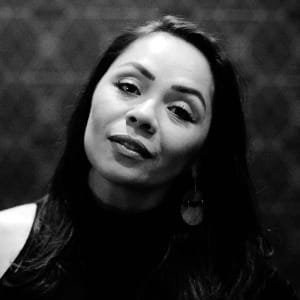
TESS ALTIVEROS
Papagena
Soprano (Seattle, WA)
Seattle Opera Debut: Clorinda, The Combat (’17)
Previously at Seattle Opera: Ascagne, Les Troyens in Concert (’25); Nana/Market #1/Wajma, A Thousand Splendid Suns (’23); Giannetta, The Elixir of Love (’21, ’22); Female Soldier, The Falling and the Rising (’19)
Engagements: Soloist, Missa Solemnis (Boulder Philharmonic); Soloist, Cinco Poemas de Vinicius de Moraes (Greenville Symphony); Mimì, La bohème (Opera Montana); Susanna, The Marriage of Figaro (Opera Idaho); Soldier, The Falling and the Rising (Des Moines Metro Opera, Arizona Opera, Intermountain Opera, Opera Memphis)
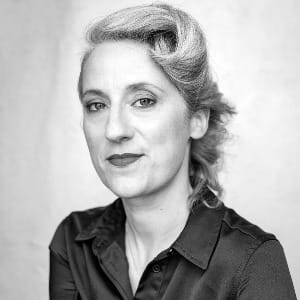
SUZANNE ANDRADE
Production (London, England)
Seattle Opera Debut
Engagements: Writer and Director, Please Right Back (Burgtheater Vienna, Edinburgh International Festival, UK Tour); Creator and Performer, Interview with the Vampire (AMC, AMC+, BBC); Writer and Director, Roots (Spoleto Festival USA, Edinburgh International Festival, Theatre de la Ville Paris, HOME Manchester, UK and International Tour); Director, Petrushka (Komishce Opera Berlin, Deutsche Opera am Rhein); Golem (Salzburg Festival, Theatre de la Ville Paris, Young Vic London, UK and International Tour, BBC Four TV)
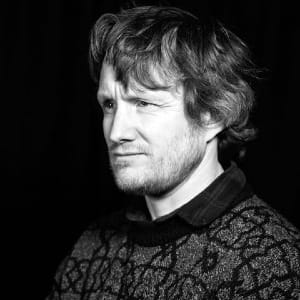
PAUL BARRITT
Animation (Margate, England)
Seattle Opera Debut
Engagements: Co-Artistic Director, Animator, and Designer, Please Right Back (Burgtheater Vienna, Edinburgh International Festival, UK Tour); Co-Artistic Director, Animator, and Designer, Edinburgh International Festival (South Bank Centre London); Creator and Animator, Interview with the Vampire (AMC, AMC+, BBC); Animation and Graphic Designer, Monk in Pieces (110th Street Films); Director and Animator, One of Those Days (Ozzy Osbourne Music Video), The Tales of Hoffman (Opera Graz)

ESTHER BIALAS
Stage Design & Costumes (Berlin, Germany)
Seattle Opera Debut
Engagements: Costume and Stage Designer, The Miracle of Heliane (SummerScape NY Bard); West Side Story (Komische Oper Berlin); Cinderella (Oper Oslo); The Flying Dutchman (Opera Wiesbaden); Macbeth, Richard III, King Lear (Schauspielhaus Düsseldorf); Nixon in China (Opera Hannover)
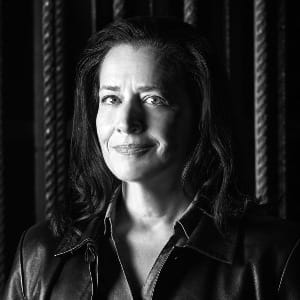
CHRISTINE BRANDES
Conductor (Canton, OH)
Seattle Opera Debut: Cleopatra, Julius Caesar in Egypt (’07)
Previously at Seattle Opera: Conductor, Alcina (’23); Pamina, The Magic Flute (’11); Susanna, The Marriage of Figaro (’09)
Engagements: Conductor, Così fan tutte (Wolf Trap Opera); The Magic Flute (Florida Grand Opera); Semele (Atlanta Opera); Julius Caesar in Egypt (West Edge Opera); Orfeo ed Euridice (West Edge Opera, Victory Hall Opera); Guest Conductor (Philharmonia Baroque Orchestra, Les Violons du Roy, Trinity Baroque Orchestra)
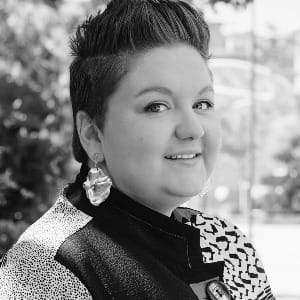
MICHAELLA CALZARETTA
Chorus Master (Muscatine, IA)
Seattle Opera Debut: The Elixir of Love (’22)
Michaella Calzaretta made her Seattle Opera debut in 2022 as the company’s new chorus master and head of music staff. Acclaimed for her high standards and superb preparation skills, Calzaretta oversees all musical activities at the company and prepares the chorus for main stage productions. In January 2024, the chorus embarked on their immensely successful first-ever tour to Mt. Vernon and Vashon Island. Recent praise includes “...continues to impress with her first-rate coaching of her singers” (Broadway World) and “The Seattle Opera Chorus...sang exuberantly and expertly” (The Seattle Times). Calzaretta is a doctoral candidate in choral conducting at Indiana University.
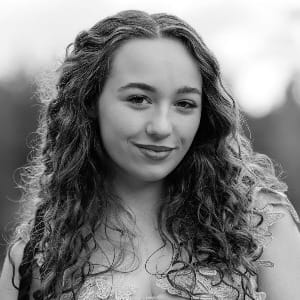
AUTUMN HELENE CHOCIEJ
Second Genie
Soprano (Auburn, WA)
Seattle Opera Debut
Previously at Seattle Opera: Maid Marion, Robin Hood (’25); Susan Slackentwist, Rootabaga Country (’24)
Engagements: Jazz Choir and Advanced Symphonic Choir (Auburn High School); Green River Voices Jazz Ensemble (Green River College); 2025 All-Northwest Jazz Choir (National Association for Music Education)
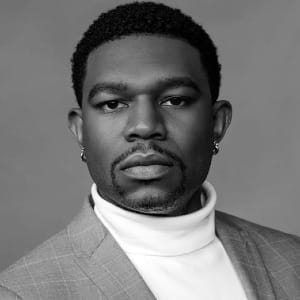
EDWIN JHAMAL DAVIS
Second Armored Man
Bass (Utica, MS)
Seattle Opera Debut: Ensemble, X: The Life and Times of Malcolm X (’24)
Engagements: Colline, La bohème (Opera Memphis, Opera Montana); Garvey Preacher, X: The Life and Times of Malcolm X (Metropolitan Opera); Sarastro, The Magic Flute (Merola Opera Program); King, Aida (Opera Grand Rapids); Angelotti, Tosca (New Orleans Opera)
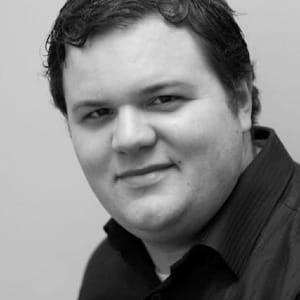
CHAD DEMARIS
First Armored Man
Tenor (Mason City, IA)
Seattle Opera Debut: Cop/Reporter 2, X: The Life and Times of Malcolm X (’24)
Previously at Seattle Opera: Historian, Stomping Grounds (’24); Monkey, Monkey and Francine in the City of Tigers (’24); Eduardo Jr./Mr. Xoloti, Frida Kahlo and the Bravest Girl in the World (’23)
Engagements: Soloist, Missa in tempore belli (Masterworks Choral Ensemble), Kaspar, Amahl and the Night Visitors (Kitsap Opera, St. Thomas Medina); Scottish Soldier #1, Silent Night (Utah Opera); Soloist, St. Matthew Passion (Salt Lake Choral Artists); Xu Xian, Madame White Snake (Edgar Snow Symposium)
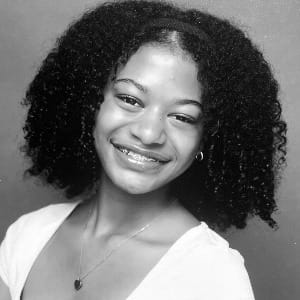
GRACE ELAINE FRANCK-SMITH
Second Genie
Soprano (Seattle, WA)
Seattle Opera Debut: Zalmai, A Thousand Splendid Suns (’23)
Engagements: Soprano, i believe (Bellevue Chamber Chorus); A Sammamish Family Concert (Sammamish Symphony Orchestra); The Nutcracker (Evergreen City Ballet Orchestra); José Luis Muñoz Music Academy; Seattle Historical Arts for Kids
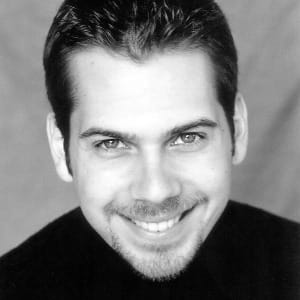
ERIK FRIEDMAN
Revival Stage Director (Oswego, IL)
Seattle Opera Debut
Engagements: Revival Director, The Magic Flute (The Royal Danish Opera, Houston Grand Opera, The Israeli Opera); Assistant Director, Der Zwerg, Roberto Devereux (LA Opera); Rusalka (Lyric Opera of Chicago)
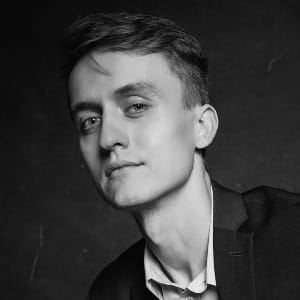
MICHAEL J. HAWK
The Speaker (Old Priest)
Baritone (Fredonia, NY)
Seattle Opera Resident Artist 2024/25
Seattle Opera Debut: Fiorello, The Barber of Seville (’24)
Previously at Seattle Opera: Silvio, Pagliacci (’24); Soloist, 60th Anniversary Concert & Gala (’24)
Engagements: Per Hansa, Giants in the Earth (South Dakota Symphony); Papageno, The Magic Flute (Buffalo Philharmonic); Demetrius, A Midsummer Night’s Dream (Santa Fe Opera); Ophémon, The Anonymous Lover, The Speaker/The Old Priest, The Magic Flute, Schaunard, La bohème (LA Opera)
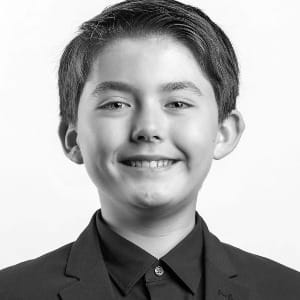
ETHAN IBSEN
First Genie
Soprano (Seattle, WA)
Seattle Opera Debut
Engagements: Soloist, The Snowman (Seattle Symphony, Northwest Boychoir); Soloist, Matteo Messina’s The Symphony of Wonder (LUMA Guild); Amahl, Amahl and the Night Visitors (St. Thomas Episcopal Church, Green Lake Church); A Festival of Lessons and Carols, Choral Traditions (Northwest Boychoir); Tan Dun’s Buddha Passion, Carmina Burana, Mahler Symphony No. 3 (Seattle Symphony)
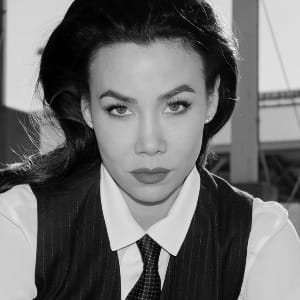
SHARLEEN JOYNT
The Queen of the Night
Soprano (Ottawa, Canada)
Seattle Opera Debut: Controller, Flight (’21)
Previously at Seattle Opera: Morgana, Alcina (’23); Amore, Orpheus and Eurydice (’22)
Engagements: Daria, Le convenienze ed inconvenienze teatrali (Wexford Festival Opera); Cunegonde, Candide (Ravinia Music Festival, Opéra National de Lyon); Winnie, Sky on Swings (Opera Philadelphia); Zerbinetta, Ariadne auf Naxos (Oper Leipzig); The Queen of the Night, The Magic Flute (Pacific Opera Victoria); Gilda, Rigoletto (Opera Colorado)
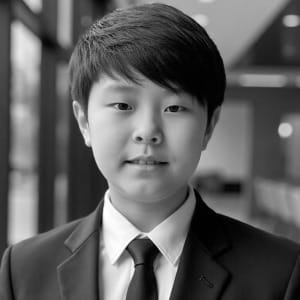
ANTHONY E. KIM
Third Genie
Soprano (Bellevue, WA)
Seattle Opera Debut
Engagements: Soloist, Jó pásztorok, Soprano, Christmas in Vienna, Soloist, Every Year Again, Soloist, UN International Energy and Climate Forum, Soloist, A Tribute to Vienna, Soprano, 525th Anniversary of Vienna Boys Choir (Vienna Boys Choir); Soloist, Readings & Carols (St. James Cathedral); Soloist, Fauré Requiem (Sacred Heart Church); Soloist, Readings & Carols (St. James Cathedral); Soloist, Fauré Requiem (Sacred Heart Church)
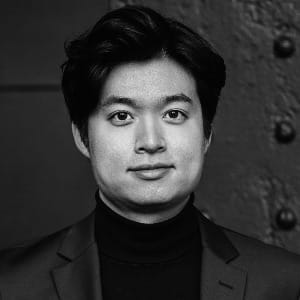
DUKE KIM
Tamino
Tenor (Seoul, South Korea)
Seattle Opera Debut: Alfredo, La traviata (’23)
Previously at Seattle Opera: Count Almaviva, The Barber of Seville (’24); Soloist, 60th Anniversary Concert & Gala (’24)
Engagements: Roméo, Roméo et Juliette (LA Opera, Washington National Opera); Tamino, The Magic Flute (Metropolitan Opera); Alfredo, La traviata (Pittsburgh Opera); Faust, Faust (Irish National Opera, Berkshire Opera Festival); Count Almaviva, The Barber of Seville (Des Moines Metro Opera); Nemorino, The Elixir of Love (Irish National Opera)

BARRIE KOSKY
Production (Melbourne, Australia)
Seattle Opera Debut
Engagements: The Monteverdi Trilogy, Rigoletto, La bohème (Komische Oper Berlin); Die Schweigsame Frau, Agrippina, The Fiery Angel (Bavarian State Opera); Prince Igor, Les Brigands (Opéra national de Paris); Tosca, Turandot, Il trittico (Dutch National Opera); Das Rheingold (Royal Opera House Covent Garden)
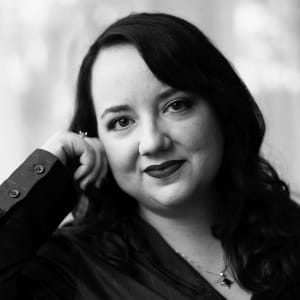
ASHLEE NAEGLE
Wigs, Hair, and Makeup Manager & Designer (Las Vegas, NV)
Seattle Opera Debut: Hair and Makeup Intern, Julius Caesar in Egypt (’07)
Ashlee Naegle made a name for herself early on in her career by mastering the dying art of wig building. She created and designed for several companies around town until the Seattle Opera created an in-house Hair and Makeup Designer position for her in 2017. During her time as the in-house Hair and Makeup Designer, she has built a sizable wig collection, built a department, and set high standards for wigs, hair and makeup. With each production, her designs are custom built for the performers and their characters to create a believable façade for the audience as well as complement the costumes and production as a whole.
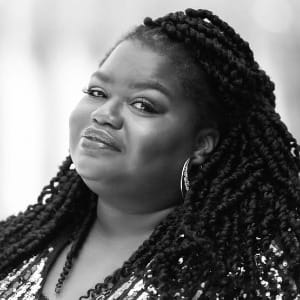
IBIDUNNI OJIKUTU
Second Lady
Soprano (Bellingham, WA)
Seattle Opera Debut: Strawberry Woman, Porgy and Bess (’11)
Previously at Seattle Opera: Mabel Lewis, Jubilee (’24); Neighbor/Ensemble, X: The Life and Times of Malcolm X (’24); Soloist, The Human Family: A Recital (’24)
Engagements: Antron’s Mother, The Central Park Five (Portland Opera); Soloist, Holiday Magic (Bellingham Symphony Orchestra); Recitalist, Wisdom (The Lincoln Theater), The Earth is a Living Thing (Jansen Art Center); Featured Artist, In The Garden of Sonder (Lakewold Gardens)

CAMILLE ORTIZ
Pamina
Soprano (Vega Baja, Puerto Rico)
Seattle Opera Resident Artist 2023/24
Seattle Opera Debut
Engagements: Marie, The Daughter of the Regiment (Opera Orlando); Galatea, Acis and Galatea (Eugene Opera); Oriana, Amadigi di Gaula (Ars Lyrica Houston); Soloist, Mozart’s Exsultate, Jubilate/Haydn’s Scena di Berenice (Oregon Bach Festival), New Year’s in Old Vienna (Portland Chamber Orchestra), Messiah (Portland Baroque Orchestra)
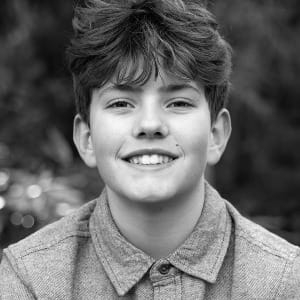
CALEB PETRINI
Third Genie
Soprano (Normandy Park, WA)
Seattle Opera Debut
Engagements: Teen Sounds Northwest Choir; Les, Newsies (Hi-Liners Musical Theatre); Soloist, Silent Night (Seattle Stake Choir, Church of Jesus Christ of Latter-Day Saints)
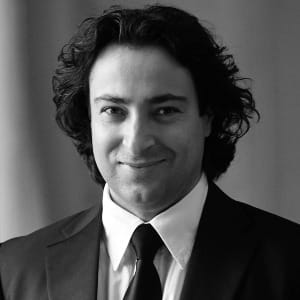
RODION POGOSSOV
Papageno
Baritone (Moscow, Russia)
Seattle Opera Debut: Raimbaud, Count Ory (’16)
Previously at Seattle Opera: Belcore, The Elixir of Love (’22); Escamillo, Carmen (’19)
Engagements: Dandini, Cinderella (LA Opera); Don Geronio, Il turco in Italia (Glyndebourne Festival); Jaroslav Prus, The Makropulos Case (Malmö Opera); Figaro, The Barber of Seville (Teatro Regio Turin); Fra Melitone, La forza del destino (Royal Opera House Covent Garden); Papageno, The Magic Flute (Glyndebourne Festival)
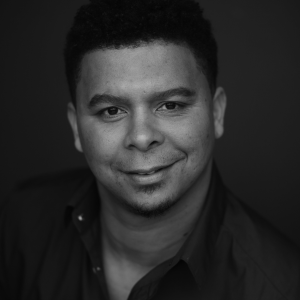
VICTOR RYAN ROBERTSON
Tamino
Tenor (Atlanta, GA)
Seattle Opera Debut
Engagements: Elijah Mohammad/Street, X: The Life and Times of Malcolm X (Metropolitan Opera, Detroit Opera, Omaha Opera, Boston Modern Opera Projects); Raymond Santana, Central Park Five (Portland Opera); Sportin’ Life, Porgy and Bess (Opera Carolina, North Carolina Opera); Governor, Candide, Delbert/Stewart, The Shining (The Atlanta Opera); Piangi, Phantom of the Opera (Broadway); Ramiro, La Cenerentola (Fort Worth Opera)
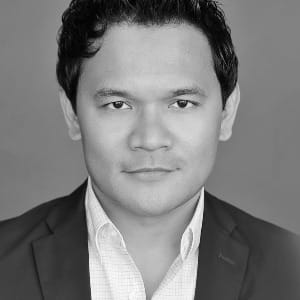
RODELL ROSEL
Monostatos
Tenor (Manila, Philippines)
Seattle Opera Debut: Monostatos, The Magic Flute (’17)
Previously at Seattle Opera: Goro, Madame Butterfly (’17)
Engagements: Monostatos, The Magic Flute (Grand Teton Musical Fesitval, Metropolitan Opera); Monsieur Taupe, Capriccio (Edinburgh International Festival); Goro, Madame Butterfly (LA Opera, Opera San Antonio, Austin Opera, Houston Grand Opera); Loge, Das Rheingold (Calgary Opera); Beppe, Pagliacci (Austin Opera); Calaf, Turandot (Opera Southwest)
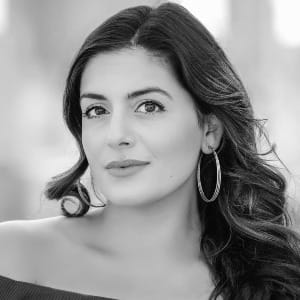
LAUREL SEMERDJIAN
Third Lady
Mezzo-soprano (Tacoma, WA)
Seattle Opera Debut
Engagements: Ragonde, Count Ory, Suzuki, Madame Butterfly (Opera Southwest); Zulma, L’Italiana in Algeri (St. Petersburg Opera Company); Public Opinion, Orpheus in the Underworld (Madison Opera); Carmen, Carmen (Tacoma Opera); Soloist, Verdi’s Requiem (Symphony Tacoma); Mahler’s Symphony No. 2 (Syracuse Symphony)

IN SUNG SIM
Sarastro
Bass (Yeosu, South Korea)
Seattle Opera Debut
Engagements: Il Re, Aida, Fasolt, Das Rheingold, Raimondo, Lucia di Lammermoor (Royal Opera House Covent Garden); Palémon, Thaïs (Teatro alla Scala di Milano); Lodovico, Otello, Pope Leone, Attila (Teatro Real de Madrid); Timur, Turandot (Israeli National Opera Tel Aviv); Sarastro, The Magic Flute (Opéra Orchestre National Montpellier Occitanie, Teatro Regio di Torino, Komische Oper Berlin)
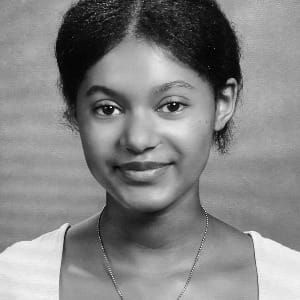
SANNE CHRISTINE SMITH
First Genie
Soprano (Seattle, WA)
Seattle Opera Debut
Engagements: Soprano, The Nutcracker (Evergreen City Ballet Orchestra); José Luis Muñoz Music Academy; Seattle Historical Arts for Kids
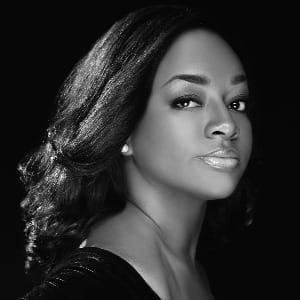
BRANDIE SUTTON
Pamina
Soprano (Huntsville, AL)
Seattle Opera Debut: Clara, Porgy and Bess (’18)
Previously at Seattle Opera: Musetta, La bohème (’21)
Engagements: La Fee, Cendrillon (Metropolitan Opera); Violetta, La traviata (Virginia Opera); Soprano, Carmina Burana (Opera Philadelphia); Treemonisha, Treemonisha (Opera Theatre of St. Louis); Anne, Sir John in Love (Bard Festival); Brahms’ German Requiem (Cecilia Chorus at Carnegie Hall)
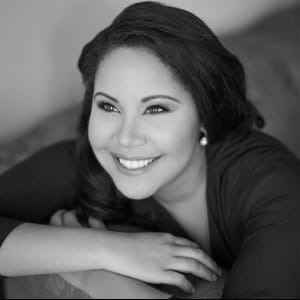
ARIANA WEHR
First Lady
Soprano (Batesville, IN)
Seattle Opera Debut: Eurydice, Orpheus and Eurydice (’22)
Previously at Seattle Opera: Nurse/Girlfriend 1/Congregant 1, Blue (’22)
Engagements: Micaëla, Carmen (Portland Opera); Girlfriend #1/Nurse/Congregant, Blue (Washington National Opera, Pittsburgh Opera, Glimmerglass Festival); La Fêtes de Thalie (Opera Lafayette); Bougie’s Requiem, Vaughan Williams’ Serenade to Music (Carnegie Hall); Despina, Così fan tutte (Opera in the Heights)
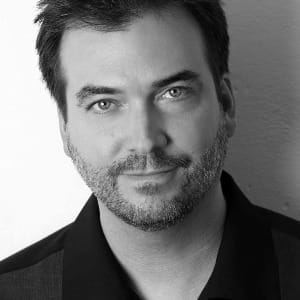
ROBERTSON WITMER
Sound Designer (Seattle, WA)
Seattle Opera Debut: The Falling and the Rising (’19)
Previously at Seattle Opera: Jubilee (’24); X: The Life and Times of Malcolm X (’24); Das Rheingold (’23)
Engagements: Music Director/Accordion, Go, Dog. Go! (Chicago Children’s Theatre); Sound Designer, The Color Purple (Village Theatre), Twelfth Night (ACT Theatre); Composer, Peril in the Alps (Laguna Playhouse)
Chorus
Soprano
Jennifer Campbell
Karen Early Evans
Dana Johnson Robbins
Ellaina Lewis
Shelly Traverse
Lyndee White
Alto
Erica Convery
YeonSoo Lee
Elizabeth Peterson
Melissa Plagemann
Heidi Vanderford
Lucy Weber
Tenor
Callum Alden
Hugh Davis
Andrew Etherington
James Galbraith
Tim Janecke
Eric Angus Jeffords
Ian Loney
Carson Lott
Jon Suek
Stephen Wall
Bass
Mark Davies
Craig Grayson
Glenn Guhr
Zachary Martin
Michael Monnikendam
Micah Parker
Julian Reisenthel
Jonah Spool
Revere Taylor
Robin Wyatt-Stone
Supernumeraries
Roxanne Alabastro
Keith Freeman
Kevin Swantek
Orchestra
Violin I
Helen Kim, Concertmaster
Emerson Millar, Assistant Concertmaster
Timothy Garland
Wayne Lee
Mikhail Shmidt
John Weller
Jeannie Wells Yablonsky
Ilana Zaks
Violin II
Cameron Daly, Principal
Gennady Filimonov, Asst. Principal
Evan Anderson
Stephen Bryant
Artur Girsky
Andrew Yeung
Caitlin Kelley
Viola
Kate Liu, Principal
Ursula Steele, Asst. Principal
Gerald Liu
Kayleigh Miller
Camille Ripple
Cello
Efe Baltacigil, Principal
Nathan Chan, Asst. Principal
Emily Hu
Charles Jacot
Double Bass
Joseph Kaufman, Principal
Will Langlie-Miletich, Asst. Principal
Travis Gore
Flute
Jeffrey Barker, Principal
Bridget Pei
Piccolo
Bridget Pei
Oboe
Mary Lynch VanderKolk, Principal
Dan Williams
Basset Horn
Benjamin Lulich, Principal
Laura DeLuca
Bassoon
Luke Fieweger, Principal
Paul Rafanelli
Horn
John Turman, Principal
Matthew Berliner
Trumpet
Alexander White, Principal
Michael Myers
Trombone
Ko-ichiro Yamamoto, Principal
Carson Keeble
Eden Garza
Timpani
Eric Schweikert, Principal
Fortepiano/Celeste
Jay Rozendaal
Offstage Percussion
Gunnar Folsom
Rob Tucker
Personnel Manager
Constance Aguocha
Assistant Personnel Manager
Keith Higgins
Rotating members of the string section are listed alphabetically.
Letters
From the General & Artistic Director

Welcome to the enchanting world of The Magic Flute! Composed in 1791, it is perhaps the most beloved of all of Mozart’s operas and it is a title that has rarely gone out of favor. The Magic Flute was a collaboration with the theatrical troupe led by Emanuel Schikaneder (who wrote the libretto), and it falls under the category of a “Singspiel,” a popular form that uses both singing and spoken dialogue. It is an opera that requires vocal virtuosity at the highest level as well as feats of comic genius.
On a personal note, The Magic Flute was one of the very first operas I ever directed, and I can tell you it is no easy task. In fact, I believed I failed at my first attempt and have never staged it since.
But let’s talk about successes! Since its premiere more than a dozen years at Berlin’s Komische Oper, this production by Suzaane Andrade and Barrie Kosky with video animation by Paul Barritt and London’s performance company 1927, has toured the world and is considered an international sensation. What makes this version of The Magic Flute so original and so engaging is its use of video animation. It also does away with all of the dialogue. You’ll notice references to silent film of the 1920s as well as cartoonists from the same era. It all comes alive in the most whimsical manner while still representing Mozart’s unparalleled genius. I had the opportunity to see this production in Los Angeles and Chicago, and I must say that it lingers delightfully in my memory. It’s a real pleasure to introduce this version of The Magic Flute for the first time to our Seattle audiences.
Now sit back and please enjoy this remarkable opera! And, as ever, thank you for supporting the Seattle Opera.
Thankfully,
James Robinson
General and Artistic Director
From the President
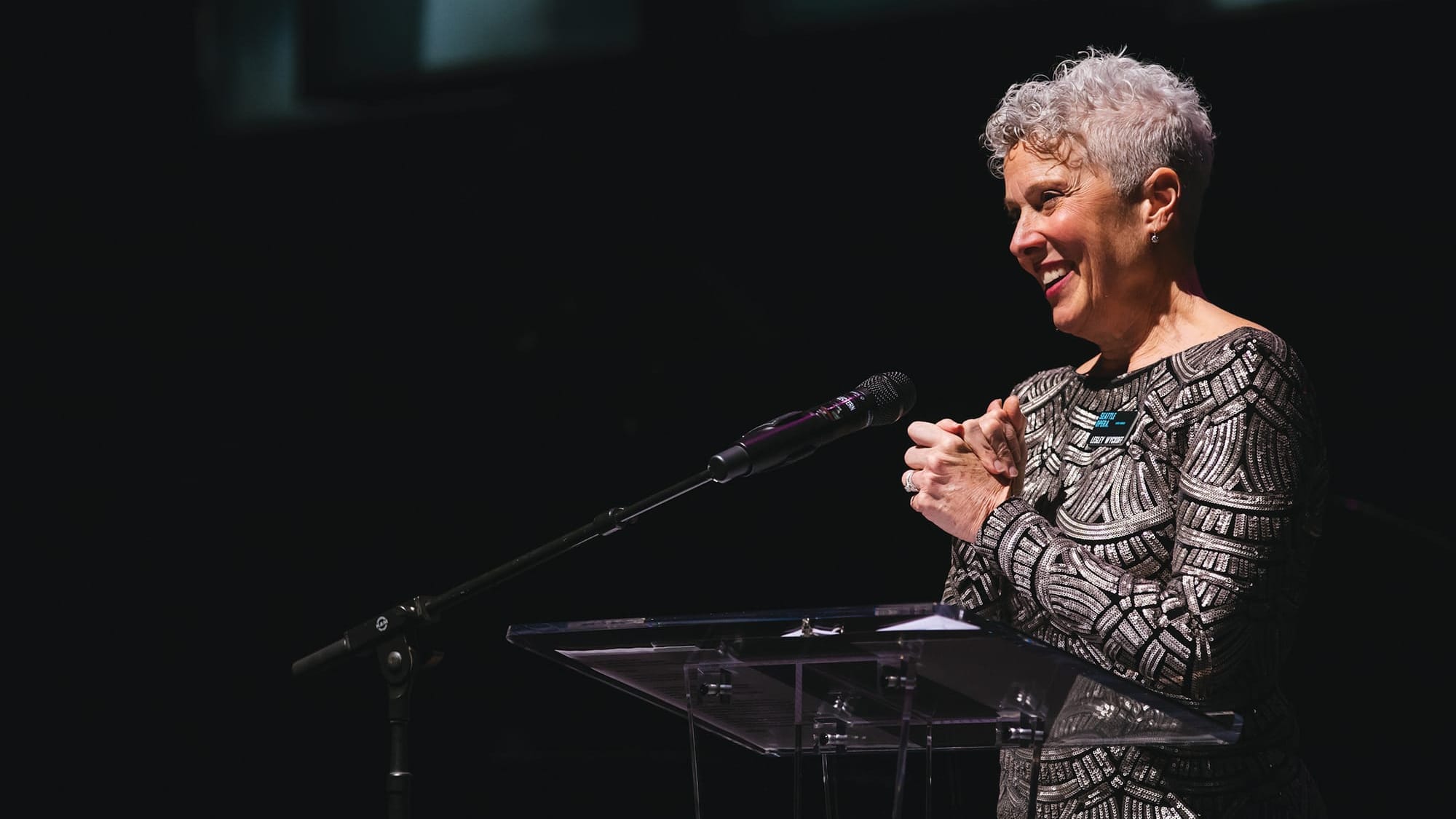
I join James in extending a warm welcome to you for this performance of The Magic Flute. We are so excited about this inventive take on Mozart’s beloved Flute in a production that has thrilled young and old globally.
I am so looking forward to this show! And to coming a second time to the Family Day performance on Sunday, March 2, to see it through the eyes of my young grandchildren. It will be their first live opera! We’ve been busy previewing and dancing. They cannot wait to see Pa-pa-pa-geno and Pa-pa-pa-gena!
By now, most of you should have received your 2025/26 season brochure. (And if you have not, don’t you worry! We’ve got you covered with available materials right here in the Grand Lobby.) It will be the inaugural line up for our new General and Artistic Director, James Robinson. Company and Board are inspired by his artistic vision and heartened by his solid business sense, both of which are demonstrated in this new season plan. We are thrilled and we think you will be too!
We begin with The Pirates of Penzance, our first ever Gilbert and Sullivan. We are presenting this comedy as you have never heard it before, with full orchestra and brilliant operatic voices. Pirates, sailors, distressed maidens on the high seas! It will be a ton of fun for all ages!
Then, Daphne in Concert by Richard Strauss. A rarely presented work by the composer of Der Rosencavalier and Salome, Daphne is one of Strauss’ last compositions and showcases the full mastery of his craft, with honed expertise both orchestrally and vocally. Fully Strauss, fully lush!
Daphne is followed by Fellow Travelers, a contemporary work set amid 1950’s McCarthyism and the persecution of homosexuals by the federal government. This new production of the opera, a collaboration with Up Until Now, a New York-based artists collective, will make its national debut in Seattle.
We close the season with Seattle favorite, Carmen, conducted by French repertory expert Ludovic Morlot, rounding out our offerings with another great choice for both aficionados and newbies.
In short, under its new leadership, Seattle Opera continues to crescendo from strength to strength. Be part of it! There are stations in the lobby where you can learn more about the 2025/26 season and sign up for a full menu of offerings. Subscriptions can save more than 40% over single ticket purchases—basically a free opera—and offer other benefits as well! And if you are under 40 years old, as many of you are, you can save even more by joining BRAVO! Act soon for the best seats! Learn more at seattleopera.org/subscribe.
And there’s more! In addition to presenting thrilling opera, mark your calendars for Friday, May 16, for Seattle Opera’s BIG OPERA PARTY. We will dine, dance, and luxuriate in live close-up opera selections right on the stage of McCaw Hall, surrounded by the sets of our upcoming production of Tosca. Get your tickets at seattleopera.org/bop.
It’s all magic! Starting with this presentation of The Magic Flute. Enjoy!
Lesley Chapin Wyckoff, President
Seattle Opera Board of Directors
A Magical Storybook
By Ulrich Lenz
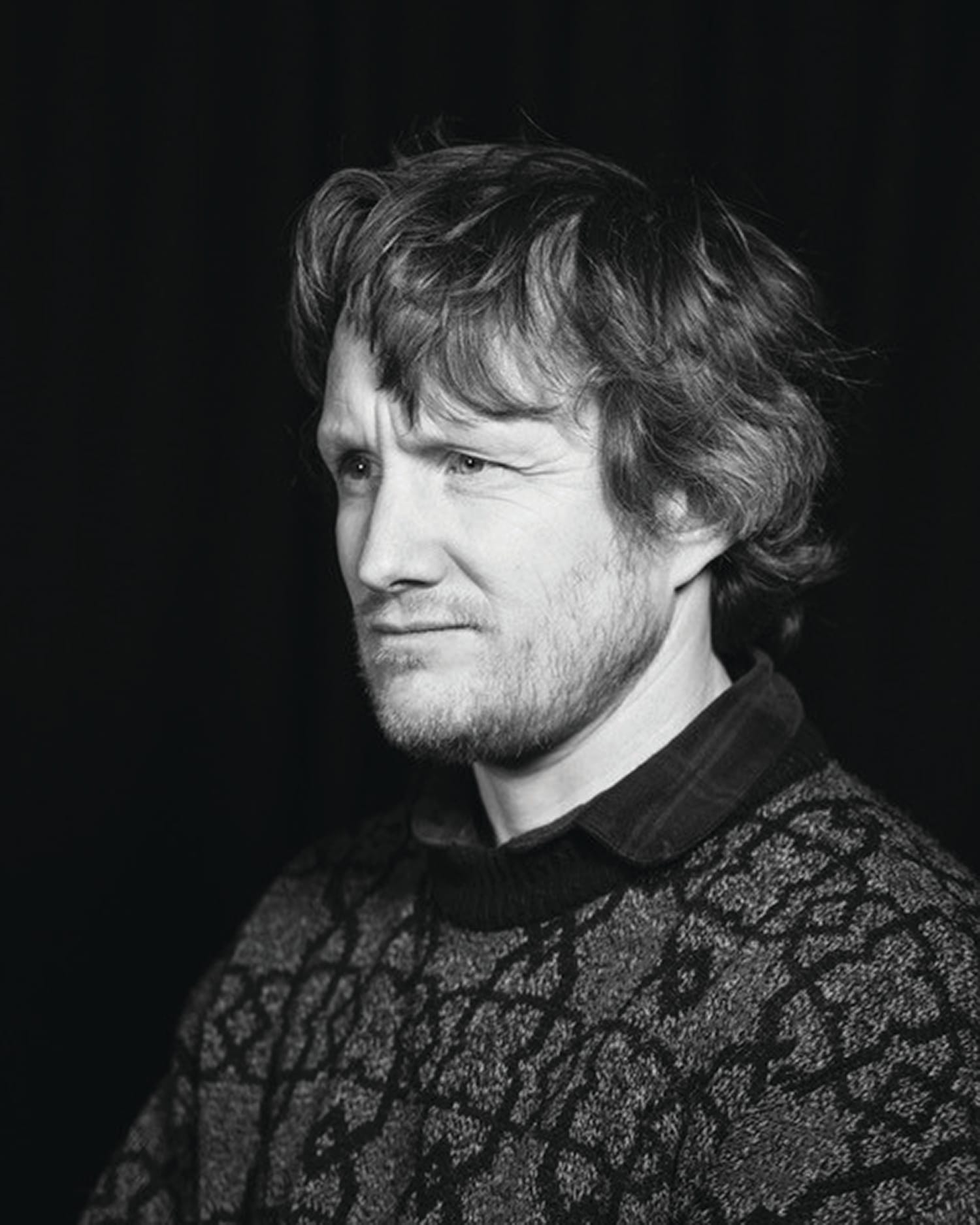
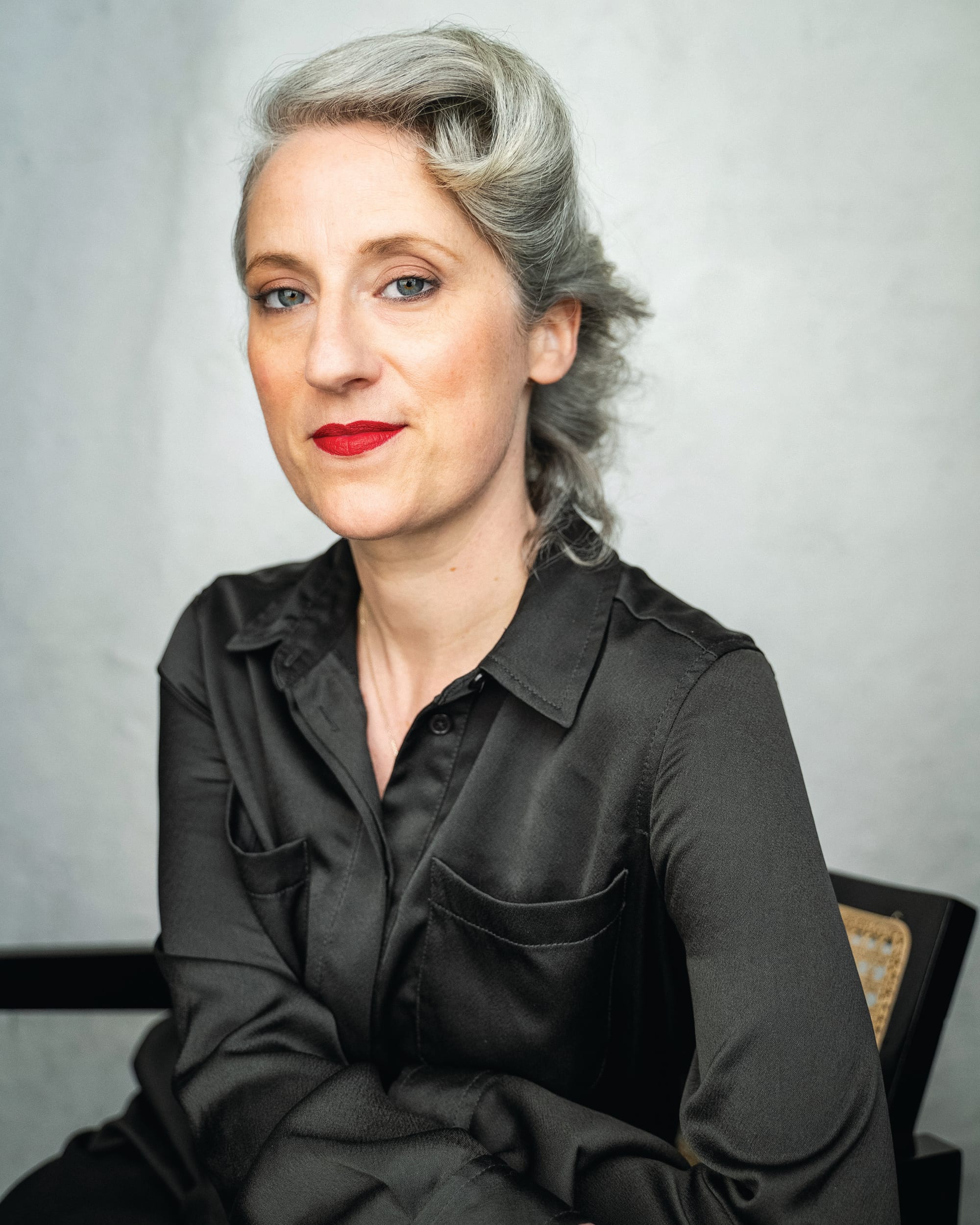
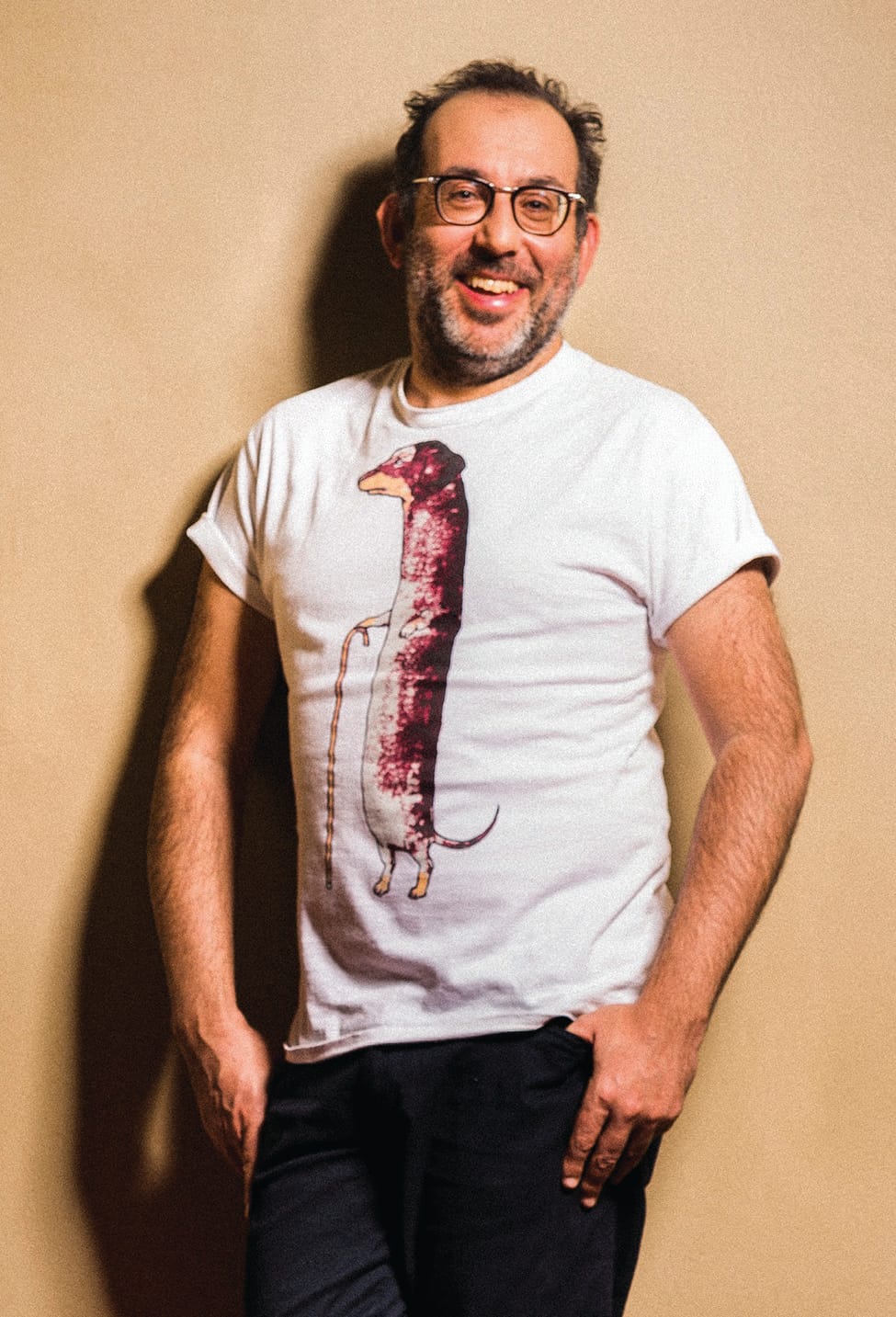
LEFT: Paul Barritt, co-creator, 1927. CENTER: Suzanne Andrade, co-creator, 1927. RIGHT: Barrie Kosky, Artistic Director, Komische Oper Berlin.
How did you come up with the idea of staging The Magic Flute with 1927?
Barrie Kosky (Artistic Director, Komische Oper Berlin): More than a decade ago, I attended a performance of Between the Devil and the Deep Blue Sea, the first show created by the British theater company known as 1927. From the moment the show started, there was this fascinating mix of live performance with animation creating its own aesthetic world. Within minutes, this strange mixture of silent film and music hall had convinced me that these people had to do The Magic Flute with me in Berlin!
The result was a unique Magic Flute. Although Suzanne and Paul were working in Berlin for the first time, they had a natural feel for the city’s artistic ambiance, especially the Berlin of the 1920s, when it was such an important creative center for painting, cabaret, silent film, and animated film. Suzanne, Paul, and I share a love for revue, vaudeville, music hall, and similar forms of theater, and, of course, for silent film. So, Papageno is suggestive of Buster Keaton, Monostatos is a bit Nosferatu, and Pamina perhaps a bit reminiscent of Louise Brooks. But it’s more than an homage to silent film—there are far too many influences from other areas.
Is your love for silent film the motivation behind the name “1927”?
Suzanne Andrade (co-creator of 1927): 1927 was the year of the first sound film. The Jazz Singer with Al Jolson was an absolute sensation at the time. We work with a mixture of live performance and animation, which makes it a completely new art form in many ways. Many others have used film in theater, but 1927 integrates film in a very new way. We don’t do a theater piece with added movies. Nor do we make a movie and then combine it with acting elements. Everything goes hand in hand. Our shows evoke the world of dreams and nightmares, with aesthetics that hearken back to the world of silent film.
Paul Barritt (co-creator of 1927): And yet it would be wrong to see in our work only the influence of the 1920s and silent film. We take our visual inspiration from many eras, from the copper engravings of the 18th century as well as in comics of today. There is no preconceived aesthetic setting in our mind when we work on a show. The important thing is that the image fits. A good example is Papageno’s aria “Ein Mädchen oder Weibchen” [“A Girl or a Little Wife”]. In the libretto, he is served a glass of wine in the dialogue before his aria. We let him have a drink, but it isn’t wine. It’s a pink cocktail from a giant cocktail glass, and Suzanne had the idea that he would start to see pink elephants flying around him. Of course, the most famous of all flying elephants was Dumbo—from the 1940s—but the actual year isn’t important as long as everything comes together visually.
Suzanne Andrade: Our Magic Flute is a journey through different worlds of fantasy. But as in all of our shows, there is a connecting style that ensures that the whole thing doesn’t fall apart aesthetically.
Barrie Kosky: This is also helped by 1927’s very special feeling for rhythm. The rhythm of the music and the text has an enormous influence on the animation. As we worked together on The Magic Flute, the timing always came from the music, even—especially—in the dialogues, which we condensed and transformed into silent film intertitles with piano accompaniment. However, we use an 18th-century fortepiano, and the accompanying music is by Mozart. This not only gives the whole piece a consistent style, but also a consistent rhythm. It’s a silent film by Wolfgang Amadeus Mozart, so to speak!
Does this piece work without the dialogue?
Suzanne Andrade: I think that almost any story can be told without words. You can undress a story to the bone, to find out what you really need to convey the plot. We tried to do that in The Magic Flute. You can convey so much of a story through purely visual means. You don’t always need two pages of dialogue to show the relationship between two people. You don’t need a comic dialogue to show that Papageno is a funny character. A clever gimmick can sometimes offer more insight than dialogue.
Paul Barritt: Going back to silent films, for a moment—they weren’t just films without sound, with intertitles in place of the missing voices. Intertitles were actually used very sparingly. The makers of silent films instead told their stories through the visual elements. Silent films told their story through gestures, movements, and glances, and so on.
Barrie Kosky: This emphasis on the images makes it possible for every viewer to experience the show in his or her own way: as a magical, living storybook; as a curious, contemporary meditation on silent film as a singing silent film; or as paintings come to life. Basically, we have a hundred stage sets in which things happen that normally aren’t possible onstage: flying elephants, flutes trailing notes, bells as showgirls. We can fly up to the stars and then ride an elevator to hell, all within a few minutes. In addition to all the animation in our production, there are also moments when the singers are in a simple white spotlight. Suddenly there’s only the music, the text, and the character. The very simplicity makes these perhaps the most touching moments of the evening. During the performance, the technology doesn’t play in the foreground. Although Paul spent hours and hours sitting in front of computer to create it, his animation never loses its deeply human component. You can always see that a human hand has drawn everything. Video projections as part of theatrical productions aren’t new. But they often become boring after a few minutes, because there isn’t any interaction between the two-dimensional space of the screen and the three dimensions of the actors. Suzanne and Paul have solved this problem by combining all of these dimensions into a common theatrical language.
What does The Magic Flute really mean?
Paul Barritt: It’s a love story, told as a fairy tale.
Suzanne Andrade: The love story between Tamino and Pamina. Throughout the entire piece, the two try to find each other—but everyone else separates them and pulls them away from each other. Only at the very end do they come together.
Barrie Kosky: A strange, fairytale love story, one that has a lot of archetypal and mythological elements, such as the trials they must undergo to gain wisdom. They have to go through fire and water to mature. These are ancient rites of initiation.
Tamino falls in love with a portrait. How many myths and fairy tales include this plot point? The hero falls in love with a picture and goes in search of the subject. And on his way to her, he encounters all sorts of obstacles. And, at the same time, the object of his desire faces her own personal obstacles on her own journey.
You can experience our production as a journey through the dream worlds of Tamino and Pamina. These two dream worlds collide and combine to form one strange dream. The person who combines these dreams and these worlds is Papageno. We are very focused on these three characters. Interestingly, Papageno is in pursuit of an idealized image too: the perfect fantasy woman at his side, something he craves almost desperately.
Printed with permission from LA Opera.
Enlighten Us!
By Jonathan Dean
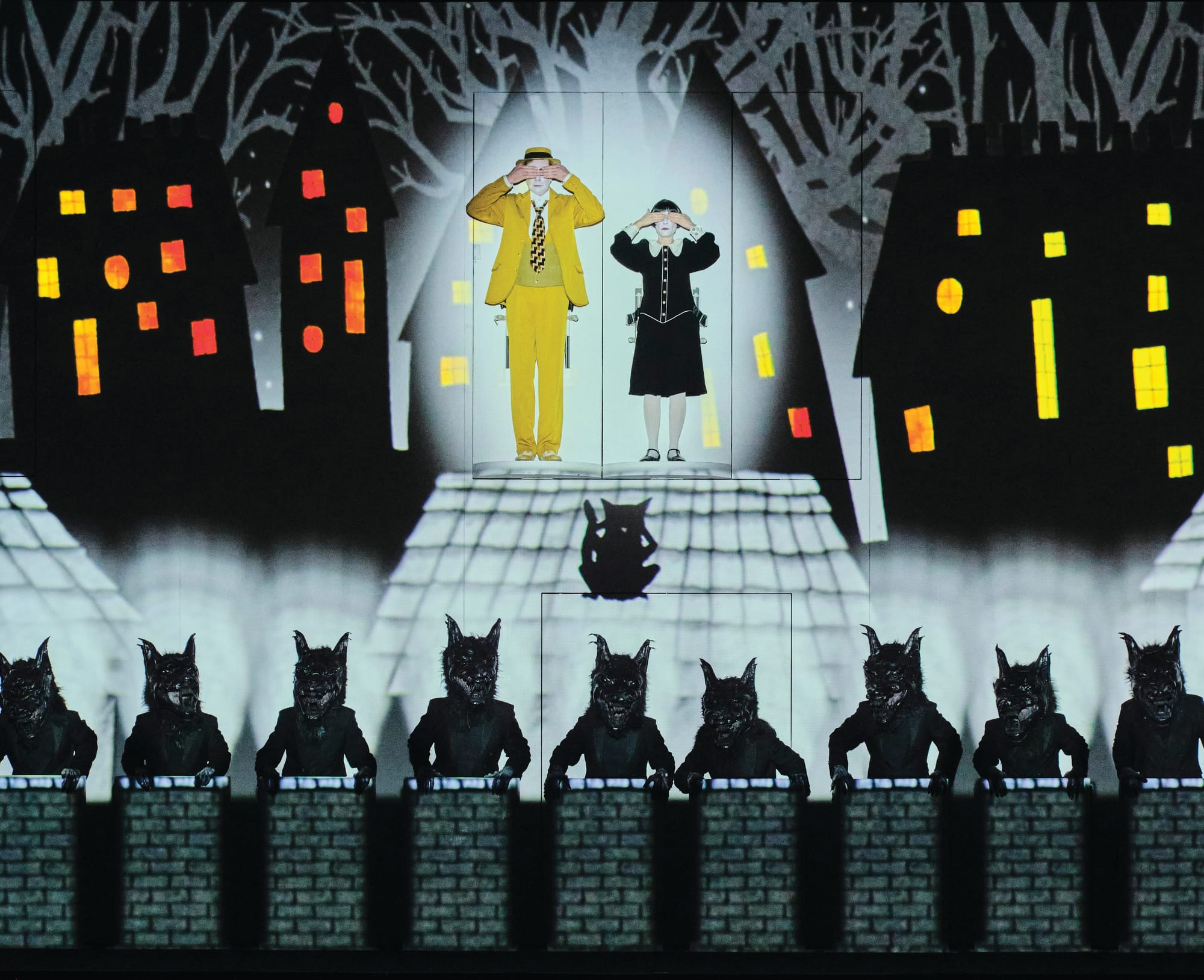
What a strange opera The Magic Flute is. It’s like an Indiana Jones movie. No, a Miyazaki movie. No, it’s an advertisement for the Freemasons. It’s classical. It’s Romantic. It’s a “rescue opera.” It’s an initiation rite. It’s frivolous, silly to the point of absurdity. It’s also a profound meditation on the deepest questions of human existence. It’s a dated bundle of offensive clichés, and its values are always ahead of us, ever just out of reach.
Our confusion, our inability to categorize The Magic Flute, or to say definitively what it means, would doubtless have amused Mozart and Schikaneder. I suspect both would be surprised, if not appalled, to learn that now, 234 years after its creation, their opera is still performed to sold-out houses all over the world.
Hoping to make some money in uncertain times, these two experienced men of the late-eighteenth-century Viennese theater created an entertaining hodgepodge, throwing together loads of miscellaneous ideas and images caught, almost at random, from the prevailing cultural breezes of the 1790s. They drew on popular tropes from opera seria, opera buffa, the myth of Orpheus, commedia dell’arte, sacred music, puppet theater and children’s theater, folk song and dance, and esoteric numerology. They stole a faux-Arabian Nights setting familiar from the theater of contemporary Italian playwright Carlo Gozzi. They mixed together all of this trendy material and tossed it onstage.
Some of the spheres Mozart and Schikaneder raided for content are foreign and unfamiliar to us. But they also incorporated the most lasting ideas of the 1790s—Enlightenment ideas that directed the great human experiment known as the modern world. For us today, The Magic Flute exists as an endorsement—a reminder—of the values of the Enlightenment.
Chief among those values: science. The “Age of Reason” saw the rise of the scientific method, the tool used by the collective human mind to shine light on the unknown, to push back the boundaries of darkness, to direct the power of impersonal logic toward finding answers to important questions. Look for proof. Question authority. Forgo easy answers. Delay immediate gratification in pursuit of the greater good.
All three of our protagonists learn these Enlightenment lessons by the end of the opera. Tamino grows from a naïve, gullible child, superficial enough to fall in love with a portrait, into what Sarastro calls a Mensch—not just a hothead and a pampered prince, but a man. Pamina shifts from a passive victim, a damsel in distress demanding rescue and constant validation, to an active participant in this heroic quest. By the end, she leads Tamino through his trials. Even Papageno learns, in his final scene, to stop wallowing in self-pity and to put his energy into something constructive using what tools happen to be available—in his case, the magic bells.
Mozart’s era wasn’t just the Age of Reason, it was the Age of Revolution. Critics immediately tried to read this opera as an allegory about contemporary politics. The Magic Flute was interpreted as a disguised endorsement of Hapsburg reform, or the American Revolution, or the French Revolution. Sarastro was Josef II, the Queen of the Night as Maria Theresa. Alternatively, Tamino represented the people of France and Pamina symbolized Freedom. As you can imagine, these allegorical readings collapse easily. Allegory must be intentional. Mozart and Schikaneder weren’t that organized.
But when it comes to the great political question of the day, the shift away from the “divine right of kings,” The Magic Flute lands squarely on the modern side. Initially, the reactionary Queen of the Night commands through mystery and dazzling personal charisma (expressed as wild coloratura). But over the course of the opera, she is revealed to be a con artist, driven mostly by lust for revenge. Revenge may be adaptive; but in social systems the world over, revenge is replaced by justice as society grows more complex. What’s the difference? Revenge is always personal; justice, like scientific logic, is impersonal. That objectivity is the great strength of Sarastro’s brotherhood, with its balance of powers, term limits, and consensus voting.
However, Sarastro’s brotherhood has a weakness that outweighs their strength, particularly from our modern perspective: they own slaves. They share the original sin of many of America’s Founding Fathers (Their chauvinism is also repellent from our vantage point, although it isn’t really clear whether Mozart and Schikaneder endorse that chauvinism). What’s wrong with the brotherhood is what was wrong with our nation in its early days, when our lofty ideals didn’t match our best practices and “all men are created equal” didn’t truly include everyone.
But ultimate authority, in The Magic Flute, comes neither from the seductive demagoguery of the Queen nor from the chauvinist “wisdom” of the priests. The older generation doesn’t have the answers; instead, it’s the young ones who know what’s what. Radically, it’s the Three Genies who lead each of our three protagonists to their goal. They usher Tamino to the Temple of Wisdom. They remind Papageno how he can find his Papagena; and they escort Pamina, at the end, to her ultimate union with Tamino.
Although we never find out the origin of the Three Genies, these vital figures guide our diverse protagonists in their “pursuit of happiness.” That everyone was entitled to pursue happiness was a new and radical idea of the Enlightenment. Of course, there was (and is) no guarantee that anyone will achieve happiness.
Enlightenment, like science and democracy, is always a work in progress. We strive to form a more perfect union, even though we may never achieve perfection. Let Mozart’s music, like his Three Genies, guide us on our journey.
An earlier version of this article appeared in Seattle Opera’s program for The Magic Flute in 2017.
Vocal Start-ups
By Chloe Woodward
Seattle Opera’s Youth Opera Project provides youth performers a chance to learn, rehearse, and perform a fully staged youth opera at the Opera Center.
This year, the Youth Opera Project performed a production of Robin Hood, based on the classic legend. For three performers, this is not the only Seattle Opera production they will be a part of this season. Meet Autumn, Anthony, and Sappho:
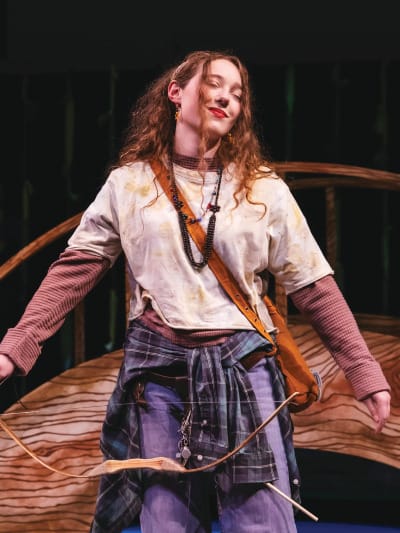
Autumn Helene Chociej
17, soprano
Autumn sang in the youth chorus in Pagliacci and in Robin Hood as Maid Marion. She is also performing in The Magic Flute as a Second Genie and will be in the youth chorus in Tosca.
“My favorite thing about opera is that I feel like I am completely able to express myself. It is the most beautiful feeling in the world to channel all my emotions into my voice and my music. Singing makes me feel bigger than myself! I am currently applying to colleges to double major in classical voice and music composition.”
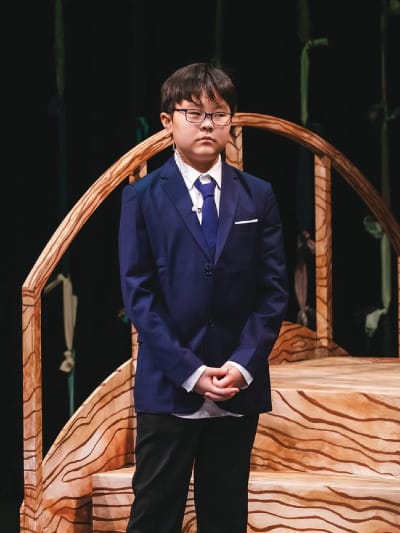
Anthony E. Kim
12, soprano
In Robin Hood, Anthony sang in the Deputy Ensemble. He is also performing in The Magic Flute as a Third Genie and will be in the youth chorus in Tosca.
“Youth Opera Project made Seattle Opera feel like a comfortable place. I met kind people at Youth Opera Project who always welcomed me, and I feel so lucky that I sing at such a lovely place with kind people. I also was amazed by the beautiful McCaw Hall.”
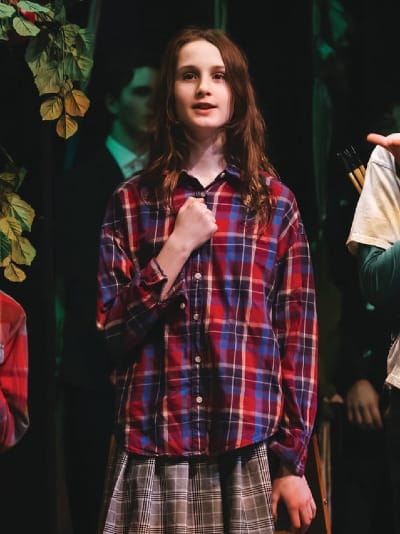
Sappho MacDonald
11, soprano
In Robin Hood, Sappho sang in the Merry Men Ensemble. Later this season, Sappho will perform in Tosca as a supernumerary.
“Stage fright? I really don’t have any at all. Youth Opera Project has boosted my confidence as well. I feel prepared and excited for my role in Tosca, and I know I am capable of performing at my best. I am most excited to see the opera singers and getting to be backstage in an adult opera. I know I will learn a lot and meet amazing friends and teachers.”
Upcoming Events
RESIDENT ARTISTS IN RECITAL
Friday, March 21 at 7:30 PM
$34 Subscribers; $39 General Public; 1 Flex Pass
The Opera Center
Our Resident Artists Michael J. Hawk and Tiffany Townsend are featured in this intimate recital. Soprano Tiffany Townsend is a graduate of LA Opera’s Young Artist Program, and has appeared recently with LA Opera, Wolf Trap Opera, and Long Beach Opera. At Seattle Opera, Townsend has covered Nedda in Pagliacci and performed the role of America Robinson in the world premiere of Jubilee. Later this season, she will cover Floria Tosca in Tosca. Michael J. Hawk is also a graduate of LA Opera’s Young Artist Program. His recent schedule has included appearances with LA Opera, Santa Fe Opera, and the Buffalo Philharmonic. Hawk’s Seattle Opera performances include the 60th Anniversary Concert & Gala, Fiorello in The Barber of Seville, and Silvio in Pagliacci.
seattleopera.org/resident-artist-recital
OPERA AND POLITICS
Tuesdays, April 15–May 20 from 6:30–8:00 PM (6 Sessions)
Online Via Zoom Webinar
Discover how opera, from the Baroque era to the present, reflected and shaped the political environments of its time, harnessing its ability to inspire, educate, and unite audiences to become a powerful medium for the expression of political ideas and cultural values.
seattleopera.org/operapolitics
EARTH TO KENZIE
Saturday, June 7 at 11:00 AM, 2:00 PM, & 5:00 PM
The Opera Center
Kenzie is a fifth grader with a vivid imagination and a taste for adventure. But when her home is threatened, sending her to a family shelter with her mother, her world is thrown into a newfound state of uncertainty. This production is appropriate for all ages, especially families with children. Each performance includes family activities in the lobby before and after the show as well as a brief Q&A with the cast after the opera.
seattleopera.org/kenzie
SEATTLE OPERA SUMMER CAMPS
Artful Explorers & Maestros: July 14–18
Teen Performance Workshop: July 28–August 1
The Opera Center
This July, youth participants will get to sing, act, and perform while learning all about the art of opera! For ages 7–13, our campers will have the opportunity to create original opera stories, learn songs from actual operas, and put it all together into their very own opera performance to be presented for friends and family at the end of the week.
For teen performers, we’re offering a weeklong vocal intensive in which participants will receive individual voice lessons and learn scenes and songs from the vast classical repertoire. No prior musical or theatrical experience is necessary.
seattleopera.org/camps
OPERA TIME AT THE OPERA CENTER
Saturday, March 29, April 26, May 31, & June 28 at 10:00 AM
Pay What You Wish I Suggested Contribution is $5
The Opera Center
Read together and sing together at this interactive musical storytime. Opera Time supports language, literacy, and socio-emotional development for children ages 2–5. Children and their parents/guardian move through a progressive curriculum that explores opera and the arts through songs, stories, and creative play.
seattleopera.org/operatime
Print Edition
